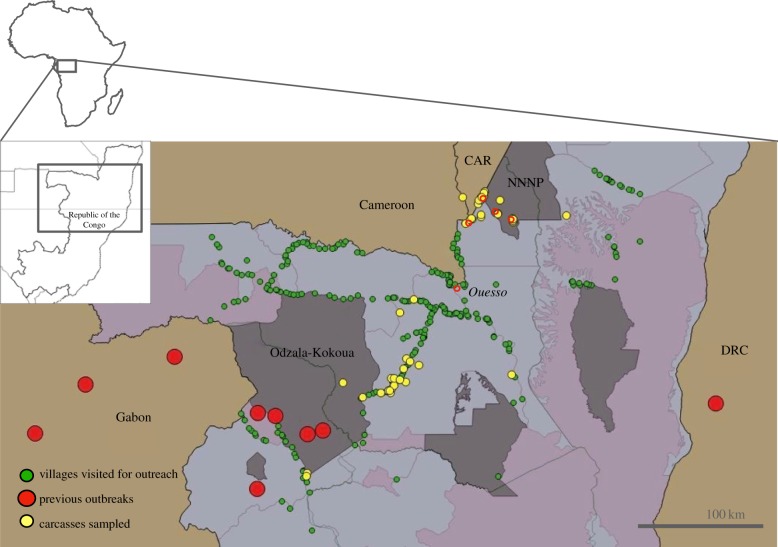Figure 1.
Community-based carcass surveillance network in the RoC. Confirmed EBOV outbreaks in the northern DRC-RoC-Gabon-Cameroon region (large red dots), the villages visited for educational outreach between April 2008–September 2018 (green, n = 268) and the GPS locations of carcasses sampled and analysed for the presence of EBOV (yellow). Protected areas are highlighted in grey. CAR, Central Africa Republic; NNNP, Nouabalé-Ndoki National Park. The sampling station (red circles) distribution reflects partly the accessibility of the terrain. Ouesso base (named, with red circle) can reach the villages south of the base within 1–2 days. Longest distances that our teams have travelled to sample a carcass have been over 200 km from the Ouesso base. In the national parks, carcasses only 30 km away may take over a day to reach. In these areas, the sampling bases have been set up more frequently into the available camps.

